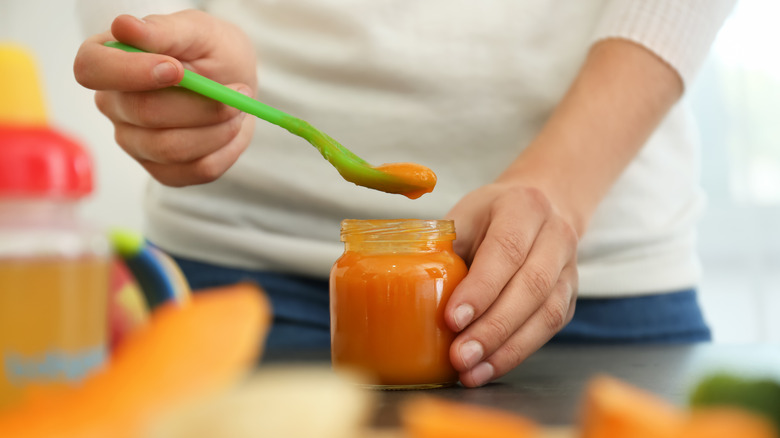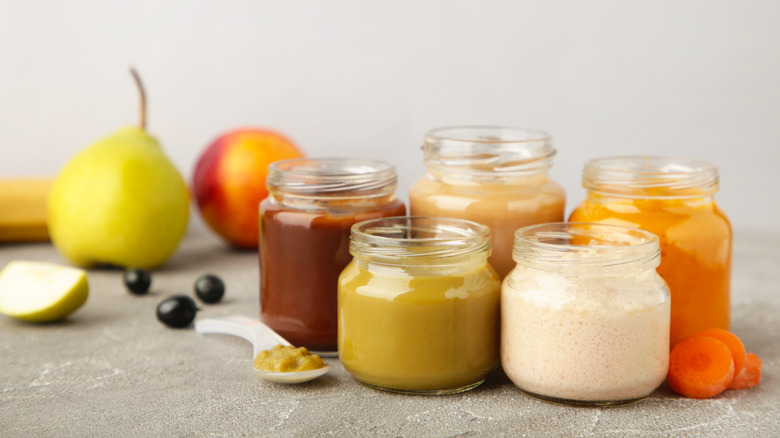The FDA Wants To Lower Lead Levels In Baby Food
You're probably aware that lead is a dangerous heavy metal. You may well already know that it can be found in water pipes and in paint from before 1978 (per CDC). But sources of lead exposure extend much further than chipping old paint. It can also be terrifyingly found in toys and jewelry as well as in candies with lead warnings from their flavorings or leached in from the ink on their wrappers or even in traditional remedies intended to heal; lead's been found in remedies for everything from infertility to colic (via CDC). The dangerous heavy metal also shows up in cosmetics, with kohl, an eye product used throughout the Middle East and in parts of Africa, testing high for lead, and sindoor, a product used by married Hindu and some married Sikh women and worn along the part or hairline, containing up to 87% lead.
Another terrifying source of lead exposure, one you're probably not familiar with, is food. According to NPR, the heavy metal is absorbed by plants and therefore impossible to remove completely. However, according to the University of Washington, with the exception of root vegetables, even foods grown in lead-contaminated soil are safe to eat as the amount of lead taken on is small. But this might not be true for babies and young children, whose developing systems are especially sensitive to lead poisoning because they absorb four to five times as much lead from the same source as an adult (per World Health Organization).
Reduction of lead in baby food
On January 24, 2023, the FDA set forth new guidelines for lead in baby food. These new regulations are part of the FDA's Closer to Zero, an effort begun in 2021 to use science-backed measures to reduce childhood exposure to lead, mercury, cadmium, and arsenic. These new regulations focus on packaged processed food for infants and children under the age of two. This group is at the highest risk for lead poisoning (per World Health Organization). While it is impossible to completely remove all lead from plants as they absorb it from the soil and water the same way they absorb minerals, the FDA has hopes the action will cause manufacturers and growers across the industry to implement new measures to stem the lead levels in their foods.
The new action levels will be 10 parts per billion for processed packaged fruits, vegetables, mixtures, puddings, and meats intended for babies and children under two. For root vegetables, the allowance is raised to 20 parts per billion. For dry cereals, again, the allowance rests at 20 parts per billion. According to FDA Commissioner Robert M. Califf, M.D., these new regulations could reduce lead exposure from food up to 27%. Some baby foods may still contain other toxic heavy metals, so it's important to feed your baby a varied diet and avoid relying on one type of food too heavily. According to pediatrician Aaron Bernstein, fruit juices can also be heavy metal heavy hitters (per NPR).

